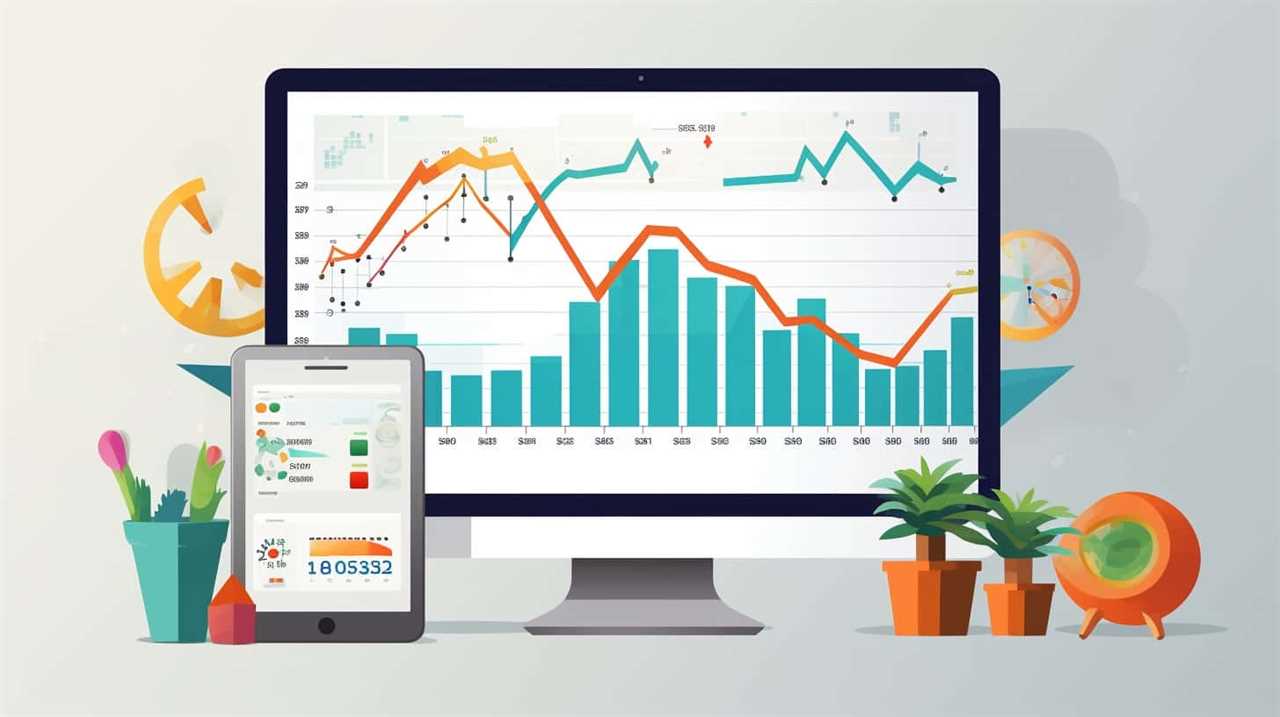For podcasters or bloggers aiming for success, pinpointing the appropriate audience and enlarging your digital footprint is crucial. Utilizing Google Ads can assist in extending your reach and enhancing your visibility across a broader audience.
In this article, I will guide you through strategic Google Ads strategies that will help you target the right audience, optimize keywords, craft compelling ad copy, and leverage the power of video ads.
Get ready to take your podcast or blog to new heights with these proven tactics.
Key Takeaways
- Utilize Google Ads’ targeting tools and audience segmentation to connect with the right listeners and readers.
- Conduct thorough keyword research and optimization to maximize visibility and attract a larger audience.
- Craft compelling ad copy that grabs attention, conveys the message effectively, and includes a clear call-to-action.
- Leverage ad extensions to make ads more informative and compelling, such as sitelink extensions, call extensions, location extensions, and callout extensions.
Targeting the Right Audience
To effectively reach the desired audience, I use Google Ads’ targeting tools to pinpoint and engage with the right listeners and readers for my podcast or blog. One of the key strategies I employ is audience segmentation. By dividing my target audience into specific groups based on demographics, interests, and behaviors, I can tailor my marketing efforts to resonate with each segment on a deeper level. This approach allows me to deliver personalized content that speaks directly to the needs and preferences of different audience subsets.

In addition to audience segmentation, I also leverage social media marketing to further amplify my reach. Social media platforms provide a wealth of opportunities to connect with potential listeners and readers. By sharing engaging content, promoting my podcast or blog, and interacting with followers, I can build a strong online presence and attract a larger audience.
By combining audience segmentation and social media marketing, I’m able to optimize my Google Ads campaigns and ensure that I’m reaching the right people at the right time. This targeted approach not only increases the effectiveness of my advertising efforts but also enhances the overall user experience for my audience.
Transitioning into the next section, another crucial aspect of my Google Ads strategy is keyword research and optimization.
Keyword Research and Optimization
For my Google Ads strategy as a podcaster or blogger, conducting thorough keyword research and optimizing my content is crucial. By improving keyword targeting, I can ensure that my ads are reaching the right audience and increasing organic traffic to my website or podcast.

Here are a few key steps I take to improve my keyword research and optimization:
- Identify relevant keywords: I use tools like Google Keyword Planner or SEMrush to find keywords that are highly relevant to my content and have a good search volume.
- Analyze competition: I research my competitors’ keywords to gain insights into what’s working well in my niche and to identify any gaps or opportunities.
- Optimize content: Once I’ve a list of targeted keywords, I strategically incorporate them into my website or podcast content, including titles, headings, and meta tags.
- Monitor and refine: Keyword research is an ongoing process. I regularly review the performance of my keywords and make adjustments as needed to improve their effectiveness.
By implementing these strategies, I can maximize the visibility of my content and attract a larger audience.
Now, let’s move on to the next step: crafting compelling ad copy that will engage and convert my target audience.
Crafting Compelling Ad Copy
Crafting compelling ad copy is crucial for capturing the attention of your target audience and driving them to take action. By using engaging language and powerful visuals, you can create ads that stand out from the competition and resonate with your audience.

Additionally, including an effective call-to-action will prompt users to click on your ad and visit your website, ultimately leading to increased conversions and success for your podcast or blog.
Engaging Ad Language
As a podcaster or blogger, I know that engaging ad language is crucial for crafting compelling ad copy in Google Ads strategies. Your choice of words can make or break the success of your ad campaign.
To create persuasive messaging, consider the following:
- Understand your target audience: Research their needs, desires, and pain points to tailor your ad language accordingly.
- Use power words: Incorporate impactful and emotive words that evoke strong emotions and grab attention.
- Keep it concise: Use clear and concise language to convey your message effectively and avoid overwhelming your audience.
- Include a compelling call to action: Encourage your audience to take the desired action by using persuasive language and creating a sense of urgency.
Effective Call-To-Action
To create compelling ad copy, I focus on creating an effective call-to-action that motivates my audience to take action.

One effective call-to-action strategy I employ is leveraging the power of effective email marketing. By including a clear and concise call-to-action in my email campaigns, I can direct my audience to visit my website, sign up for my newsletter, or make a purchase.
Additionally, I utilize social media promotion to drive engagement and generate leads. By crafting compelling ad copy with a strong call-to-action on platforms like Facebook, Twitter, and Instagram, I can effectively encourage my audience to click, subscribe, or engage with my content.
By combining effective email marketing and social media promotion, I can create a sense of urgency and compel my audience to take the desired action.
Now, let’s explore the next topic: utilizing ad extensions.

Utilizing Ad Extensions
I’ve found that incorporating ad extensions into my Google Ads strategy as a podcaster and blogger has significantly boosted my reach and engagement. Ad extensions are additional pieces of information that can be added to your ads to make them more informative and compelling.
Here are some ad extension best practices that I’ve learned along the way:
- Sitelink Extensions: These allow you to add additional links to your ad, leading users to specific pages on your website. Use them to highlight important sections or promotions.
- Callout Extensions: These let you add extra text to your ad, emphasizing key selling points or unique features. They’re great for showcasing your expertise or special offers.
- Structured Snippet Extensions: These enable you to highlight specific aspects or categories of your products or services. Use them to provide more detailed information and make your ad more relevant to users.
- Call Extensions: These include your phone number in the ad, allowing users to call you directly. They’re especially useful for businesses that rely on phone calls for conversions.
Measuring ad extension performance is crucial to optimizing your strategy. Keep an eye on metrics such as click-through rates, conversion rates, and engagement to determine which extensions are most effective. Experiment with different combinations and monitor the results to continuously improve your ad performance.
Setting Up Conversion Tracking
Utilizing ad extensions effectively and measuring their performance is just the beginning of optimizing your Google Ads strategy as a podcaster and blogger. To truly maximize your campaign’s effectiveness, you need to implement conversion tracking.

Conversion tracking allows you to measure the success of your ads by tracking the actions that users take on your website after clicking on your ad. This data is crucial for understanding which ads are driving conversions and which ones are falling short.
The first step in setting up conversion tracking is to define what actions on your website count as conversions. For example, if your goal is to drive podcast subscriptions, you can set up a conversion action for each successful subscription. This will allow you to track the number of subscriptions generated by each ad campaign.
Once you’ve defined your conversion actions, you can implement the tracking code provided by Google Ads onto your website. This code will track when a user completes a conversion action and attribute it back to the specific ad that drove the conversion.
Implementing Remarketing Campaigns
Now let’s dive into the next step of optimizing your Google Ads strategy as a podcaster or blogger: implementing remarketing campaigns.

Remarketing campaigns are a powerful tool that can help you maximize your podcast reach and increase blog traffic. By targeting users who’ve already shown interest in your content, remarketing campaigns allow you to stay top of mind and encourage them to come back for more.
Here are four key strategies to implement remarketing campaigns effectively:
- Segment your audience: Divide your audience into different groups based on their behavior and interests. This will allow you to tailor your ads to specific segments, increasing the chances of engagement.
- Create compelling ads: Craft visually appealing and persuasive ads that resonate with your audience. Use engaging headlines, clear calls to action, and compelling visuals to capture their attention.
- Set frequency caps: Control the number of times your ads are shown to each user to avoid overwhelming or annoying them. Finding the right balance will help maintain their interest without becoming intrusive.
- Test and optimize: Continuously monitor the performance of your remarketing campaigns and make data-driven adjustments. Test different ad formats, messaging, and targeting options to find what works best for your audience.
Maximizing Ad Budget Efficiency
To maximize the efficiency of my ad budget, I focus on targeting the most relevant audience segments. By improving targeting and increasing ad relevance, I can ensure that my ads are reaching the right people at the right time. This not only helps me make the most of my budget but also increases the likelihood of conversions and engagement.
One way I achieve this is by using Google Ads’ audience targeting features. I analyze data and insights to identify the demographics, interests, and behaviors of my target audience. This allows me to create customized ad campaigns that are tailored to their specific needs and preferences.

Additionally, I utilize keyword targeting to further refine my audience reach. By selecting relevant keywords that are highly searched by my target audience, I can ensure that my ads are displayed to those who are actively seeking the products or services I offer.
To illustrate the importance of improving targeting and increasing ad relevance, here is a table showcasing the impact it has on my ad budget efficiency:
| Scenario A | Scenario B | |
|---|---|---|
| Click-through Rate (CTR) | 1% | 3% |
| Cost per Click (CPC) | $1 | $0.75 |
| Conversion Rate | 5% | 8% |
| Total Conversions | 50 | 120 |
In Scenario A, where targeting and ad relevance are not optimized, the CTR is low, resulting in fewer conversions and a higher CPC. However, in Scenario B, where targeting and ad relevance are improved, the CTR is higher, leading to more conversions and a lower CPC.
A/B Testing Ad Campaigns
When it comes to running successful ad campaigns, optimizing performance is key.

A/B testing allows me to test different variations of my ads to see which ones resonate best with my target audience.
Optimizing Ad Performance
I optimized ad performance by conducting A/B testing on my Google Ads campaigns. This allowed me to gather valuable data and make informed decisions to improve the effectiveness of my ads.
Here are some key strategies I employed to optimize my ad performance:
- Analyzing ad performance metrics: I closely monitored metrics such as click-through rates, conversion rates, and cost per acquisition. This helped me identify which ads were performing well and which ones needed improvement.
- Testing different ad variations: I created multiple versions of my ads with variations in headlines, images, and call-to-action buttons. By testing these variations, I was able to determine which elements resonated best with my audience and generated the highest response rates.
- Experimenting with ad placement strategies: I tested different ad placements, including search network, display network, and YouTube ads. This allowed me to identify the platforms and placements that delivered the best results for my specific goals.
- Optimizing bidding strategies: I experimented with different bidding strategies such as manual CPC, automated bidding, and target CPA. This helped me find the optimal bidding strategy that maximized my ad performance within my budget.
By constantly testing and optimizing my ads based on these strategies, I was able to improve the performance of my Google Ads campaigns and drive better results.

In the next section, we’ll delve into the importance of testing ad variations to further enhance ad performance.
Testing Ad Variations
Continuing the exploration of ad performance optimization strategies, how can podcasters and bloggers effectively test ad variations for their Google Ads campaigns?
Testing ad variations is crucial for achieving maximum results and understanding what works best for your audience. One effective method is A/B testing, where you create two or more versions of an ad and compare their performance to determine the most effective one.
When conducting A/B testing, it’s important to focus on specific elements such as ad placement and ad targeting. By testing different ad placements, such as within podcast episodes or on specific blog pages, you can identify the optimal placement that generates the highest engagement and conversions.

Additionally, testing ad targeting allows you to refine your audience targeting parameters. By experimenting with different demographics, interests, and keywords, you can discover the most responsive audience for your ads.
Optimizing Landing Pages for Conversions
To maximize conversions, it’s essential to optimize landing pages with strategic elements. By improving user experience and optimizing landing page design, you can create a compelling and persuasive online destination that encourages visitors to take action.
Here are four key strategies to consider:
- Clear and concise messaging: Ensure that your landing page clearly communicates the value proposition of your product or service. Use compelling headlines and subheadings to grab the reader’s attention and highlight the benefits they’ll receive.
- Strong call-to-action: Make it easy for visitors to take the desired action by providing a clear and prominent call-to-action button. Use action-oriented language and create a sense of urgency to motivate them to act immediately.
- Mobile optimization: With more and more users accessing the internet from mobile devices, it’s crucial to optimize your landing pages for mobile. Ensure that the page loads quickly, text is legible, and buttons are easily clickable on smaller screens.
- Trust signals: Build trust with your visitors by including testimonials, reviews, and trust badges on your landing page. This helps establish credibility and reassures potential customers that they’re making the right decision.
By implementing these strategies, you can create landing pages that convert visitors into customers.

Now, let’s explore the next section on harnessing the power of video ads.
Harnessing the Power of Video Ads
One effective strategy for podcasters and bloggers is harnessing the power of video ads to engage and captivate their audience. With the rise of video consumption on platforms like YouTube and social media, video ads have become an essential tool for content creators to reach their target audience effectively.
To harness the power of video ads, it’s crucial to focus on two key aspects: video ad production and video ad targeting.
Firstly, investing in high-quality video ad production is essential to grab the attention of viewers. Creating visually appealing and compelling videos that align with your brand and message is crucial for success. Incorporate storytelling techniques, use eye-catching visuals, and ensure that the video is professionally edited and polished.

Secondly, effective video ad targeting is vital to ensure that your ads reach the right audience. Utilize the targeting options provided by advertising platforms like Google Ads to narrow down your audience based on demographics, interests, and behaviors. This way, you can deliver your video ads to people who are most likely to be interested in your content, increasing the chances of engagement and conversions.
Leveraging Google Display Network
How can I effectively leverage the Google Display Network to enhance my advertising strategy as a podcaster or blogger?
The Google Display Network offers a wealth of opportunities for podcasters and bloggers to reach their target audience and optimize their ad spend. By leveraging audience targeting, you can ensure that your ads are shown to the right people at the right time, increasing the chances of engagement and conversions.
Here are four ways to effectively leverage the Google Display Network:

- Define your target audience: Take the time to understand who your ideal listeners or readers are. Use demographic targeting options such as age, gender, and location to narrow down your audience and ensure your ads are shown to the most relevant people.
- Utilize remarketing: Reach out to people who’ve already shown interest in your content by targeting previous website visitors or app users. This can be a powerful way to stay top-of-mind and encourage them to come back for more.
- Experiment with different ad formats: The Google Display Network offers a variety of ad formats, including image ads, responsive ads, and native ads. Test different formats to see which ones resonate best with your audience and drive the most engagement.
- Monitor and optimize: Keep a close eye on your ad performance and make adjustments as needed. Analyze the data provided by Google Ads to identify trends and patterns, and optimize your ad spend accordingly.
Expanding Reach With Google Shopping Ads
When it comes to expanding my reach as a podcaster or blogger, Google Shopping Ads have proven to be a powerful tool.
By targeting niche audiences, I can connect with people who are specifically interested in my content and products.
This not only boosts my sales conversions but also maximizes my online visibility, allowing me to reach a wider audience and grow my brand.
Targeting Niche Audiences
Why should I consider using Google Shopping Ads to expand the reach of my podcast or blog to target niche audiences?

Well, utilizing Google Shopping Ads can be an effective strategy for reaching specific audience segments and maximizing the visibility of your content. Here are four reasons why you should consider incorporating Google Shopping Ads into your marketing plan:
- Increased Visibility: By utilizing Google Shopping Ads, you can showcase your products or services to a wider audience, ensuring that your podcast or blog reaches the right people.
- Targeted Advertising: With Google Shopping Ads, you have the ability to target niche audiences based on their demographics, interests, and search behavior. This allows you to tailor your content specifically to your desired audience.
- Cost-Effective: Google Shopping Ads work on a pay-per-click basis, meaning you only pay when someone clicks on your ad. This makes it a cost-effective option for targeting niche audiences and maximizing your return on investment.
- Enhanced Conversion Rates: By reaching specific audience segments through Google Shopping Ads, you’re more likely to attract engaged users who are interested in your content. This can lead to higher conversion rates and ultimately boost the success of your podcast or blog.
Boosting Sales Conversions
To expand the reach of my podcast or blog and boost sales conversions, I can leverage the power of Google Shopping Ads. By utilizing this advertising platform, I can showcase my products directly to potential customers who are actively searching for them.
Google Shopping Ads allow me to display product images, prices, and descriptions, making them highly visible and enticing to users. To maximize the effectiveness of these ads, I need to ensure that my website design is optimized for conversions. A clean and user-friendly layout, fast loading times, and clear calls-to-action are essential.
Additionally, I can complement my efforts with social media marketing, promoting my products and driving traffic to my website. By combining these strategies, I can significantly improve my sales conversions and expand my reach to a wider audience.

Maximizing Online Visibility
One effective way to maximize online visibility and expand reach is by utilizing Google Shopping Ads. These ads allow you to showcase your products directly in the search results, making it easier for potential customers to discover and purchase from your online store.
Here are a few strategies to consider when using Google Shopping Ads:
- Optimize your product listings with accurate and detailed information, including high-quality images and compelling descriptions.
- Use targeted keywords and negative keywords to ensure your ads are seen by the right audience.
- Leverage social media promotion to drive traffic to your product listings and increase visibility.
- Collaborate with influencers to showcase your products and reach a wider audience.
By implementing these strategies, you can increase your online visibility and attract more potential customers to your website.
Now, let’s move on to the next section where we’ll discuss monitoring and analyzing campaign performance.

Monitoring and Analyzing Campaign Performance
I use Google Ads to monitor and analyze campaign performance as a podcaster and blogger. Monitoring campaign metrics is crucial in understanding how well my ads are performing and whether they’re reaching the right audience. Google Ads provides a wealth of data that allows me to track key metrics such as impressions, clicks, and conversions. By analyzing these metrics, I can identify which ads are driving the most engagement and adjust my strategies accordingly.
One of the most valuable aspects of Google Ads is its ability to analyze audience engagement. I can see how users are interacting with my ads, whether they’re clicking on them, watching videos, or filling out forms. This information helps me understand what resonates with my audience and tailor my content to better meet their needs.
Google Ads also provides detailed demographic data, allowing me to target specific audience segments and refine my campaigns for maximum impact. By analyzing this information, I can identify trends and patterns that help me optimize my ads and reach the right people at the right time.
Frequently Asked Questions
How Do I Choose the Right Audience to Target for My Podcast or Blog?
To choose the right audience for my podcast or blog, I consider demographics, interests, and engagement. Understanding who my target audience is helps me create content that resonates and builds a loyal following.

What Are the Best Practices for Conducting Keyword Research and Optimizing My Content for Google Ads?
When it comes to conducting keyword research and optimizing your content for Google Ads, two best practices to keep in mind are uncovering hidden opportunities with long tail keywords and increasing ad relevance by optimizing landing pages.
How Can I Create Ad Copy That Stands Out and Compels Users to Click on My Ads?
To create ad copy that stands out and compels users to click, I utilize effective techniques such as crafting compelling headlines, using persuasive language, and highlighting unique selling points. These strategies increase click-through rates and drive success.
What Are Some Effective Ad Extensions That I Can Use to Enhance My Google Ads Campaigns?
As a podcaster or blogger, I’ve found that using effective ad extensions in my Google Ads campaigns has been key to enhancing their success. Some examples include sitelink extensions and call extensions, which provide additional benefits and encourage users to take action.
How Can I Track Conversions and Measure the Success of My Advertising Campaigns?
To track conversions and measure the success of my advertising campaigns, I use Google Ads’ conversion tracking feature. It allows me to see which ads are driving the most conversions and make data-driven decisions to optimize my campaigns.

Conclusion
In the vast landscape of digital advertising, Google Ads is a powerful tool for podcasters and bloggers to reach their target audience and achieve success. By targeting the right audience and conducting thorough keyword research, podcasters and bloggers can ensure that their ads are being seen by the people who are most likely to be interested in their content.
Crafting compelling ad copy is another important aspect of using Google Ads effectively. By creating ads that are engaging and persuasive, podcasters and bloggers can increase the chances that people will click on their ads and explore their content further.
Utilizing ad extensions is another strategy that can help podcasters and bloggers get the most out of their Google Ads campaigns. Ad extensions allow them to provide additional information or links in their ads, making them more useful and informative to potential viewers.
Setting up conversion tracking is essential for measuring the success of Google Ads campaigns. By tracking conversions, podcasters and bloggers can see which ads are driving the most engagement and adjust their strategies accordingly.

Harnessing the power of video ads is another effective way for podcasters and bloggers to promote their content. Video ads can be engaging and visually appealing, capturing the attention of potential viewers and encouraging them to learn more.
Leveraging the Google Display Network is another strategy that can help podcasters and bloggers expand their reach. The Display Network allows them to place their ads on a wide variety of websites, reaching a larger audience and increasing the chances of attracting new listeners or readers.
Finally, podcasters and bloggers can also use Google Ads to promote their content through Google Shopping Ads. This feature allows them to showcase their products or services directly in search results, making it easier for potential viewers to find and engage with their content.
With Google Ads, podcasters and bloggers have a wealth of tools and strategies at their disposal to effectively promote their content and grow their audience. The possibilities for broadcasting success are endless.










